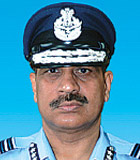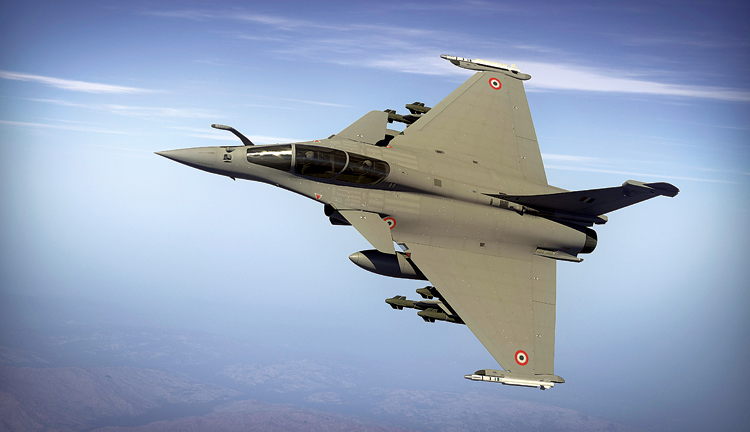INDIAN ARMED FORCES CHIEFS ON OUR RELENTLESS AND FOCUSED PUBLISHING EFFORTS

The insightful articles, inspiring narrations and analytical perspectives presented by the Editorial Team, establish an alluring connect with the reader. My compliments and best wishes to SP Guide Publications.

"Over the past 60 years, the growth of SP Guide Publications has mirrored the rising stature of Indian Navy. Its well-researched and informative magazines on Defence and Aerospace sector have served to shape an educated opinion of our military personnel, policy makers and the public alike. I wish SP's Publication team continued success, fair winds and following seas in all future endeavour!"

Since, its inception in 1964, SP Guide Publications has consistently demonstrated commitment to high-quality journalism in the aerospace and defence sectors, earning a well-deserved reputation as Asia's largest media house in this domain. I wish SP Guide Publications continued success in its pursuit of excellence.
- The layered Air Defence systems that worked superbly, the key element of Operation Sindoor
- Operation Sindoor | Day 2 DGMOs Briefing
- Operation Sindoor: Resolute yet Restrained
- India's Operation Sindoor Sends a Clear Message to Terror and the World – ‘ZERO TOLERANCE’
- Japan and India set forth a defence cooperation consultancy framework, talks on tank and jet engines
Indian Air Force Finally Inducts Rafale Fighters
Rafale is one of the most potent aircraft today, which will exponentially enhance the combat potential of IAF and significantly boost India’s deterrence capability and when required Rafale will overwhelm the adversaries
 | By Air Marshal S.B.P. Sinha (Retd) Deputy Chief of the Air Staff and Air Officer Commanding-in-Chief, Central Air Command, IAF. |

Post Kargil conflict, in the year 2000 IAF initiated procurement for 126 Mirage 2000-5 which later became 126 Medium Multi Role Combat Aircraft (MMRCA) case. Defence Procurement Board defined the procurement process for 126 MMRCA in October 2004, Defence Acquisition Council (DAC) granted ‘Acceptance of Necessity’ for 126 MMRCA in June 2007 and Request for Proposal (RFP) was issued two months later. Air HQ evaluated six fighters and Rafale of Dassault Aviation (DA) emerged as L1 in January 2012. Contract negotiation was put on hold in February 2012 after the very first meeting with DA due to a spate of anonymous letters and representations alleging errors in L1 determination. Hon’ble Raksha Mantri directed Independent Monitors to examine the allegations. After scrutinising the entire L1 determination process, the Independent Monitors submitted their report in June 2012 stating that the allegations were baseless and devoid of truth, and cleared the procurement to continue.
Contract Negotiations Committee (CNC) had finalised most aspects related to maintenance, Transfer of Technology (ToT) and offsets but could not close irresolvable differences between HAL and DA related to who amongst them will bear the cost of 2.7 times additional manhours asked by HAL to manufacture Rafale, the additional ‘Non-Recurring Cost’ to create new production facilities for Rafale in HAL over and above that specified in the RFP and who amongst them will take responsibility for the 108 Rafale licence manufactured by HAL. The choice was to continue indefinitely to resolve differences between HAL and DA or cancel the RFP and restart the procurement. MMRCA procurement had failed due to impasse on ToT; therefore, it was decided to evolve a new process to obtain ToT through Strategic Partnership model. It was not prudent to procure large numbers of fighters without ToT. Rafale was evaluated, flyaway aircraft cost was known through multi-vendor competitive bidding and MMRCA CNC had achieved full clarity on flyaway aircraft. Considering another aircraft at this stage would require few more years of negotiations. To meet ‘critical operational necessity of IAF’ it was decided to buy 36 Rafale through Government to Government (G-2-G) procurement, which is not unique. Accordingly, the MMRCA RFP was withdrawn in June 2015.
Procurement of 36 Rafale on G-2-G route was initiated under para 71 of DPP 2013 after DAC approval. Air HQ also obtained DAC approval to change weapons and deliverables to make Rafale more potent. Since Rafale was already evaluated and its cost was known the Indian Negotiating Team drafted the Inter-Governmental Agreement (IGA) with all contractual annexure and negotiated the price with their French counterpart. After vetting by Ministries of External Affairs and Law & Justice the IGA was moved through MoD (Finance), MoD and MoF for soliciting CCS approval. After CCS approval, Defence Ministers of India and France signed the IGA on 23 September 2016.
IGA includes the costs of 36 Rafale, weapons, spares, role equipment, tools, testers, ground equipment, training, documentation and commissioning of two simulators with turnkey infrastructure. Maintenance costs in aircraft procurement are not visible at the time of procurement as maintenance contracts are signed later on the revenue route. This is the first procurement with Performance-Based Logistics (PBL), which provides maintenance support at two bases along for five years to be paid annually at the end of every ensuing year with assured operational availability of at least 75 per cent of 36 Rafale at all times. There is also a provision to extend PBL for few more years at same terms and cost.
After a very long wait of over 19 years, Rafale (MMRCA) procured to meet ‘critical operational necessity of IAF’ is now getting inducted in IAF. India gets the Rafale with most modern sensors, best in class weapons, state-of-the-art electronic warfare to enhance survivability, India specific enhancements, better price terms, better overall delivery terms and timeline, better maintenance terms, longer industrial support commitment, additional warranty, longer PBL commitment. This is the first procurement with such deep oversight and commitment by the supplier’s government. These aircraft were procured at a cost lower than that discovered through multi-vendor competitive bidding. The procurement of Rafale through a G-2-G process enabled its induction with best in class weapons and sensors as it is not possible to specify such weapons and sensors in the RFP for a multi-vendor procurement.
Rafale is one of the most potent aircraft today, which will exponentially enhance the combat potential of IAF and thereby significantly boost India’s deterrence capability and when required Rafale will overwhelm the adversaries.





